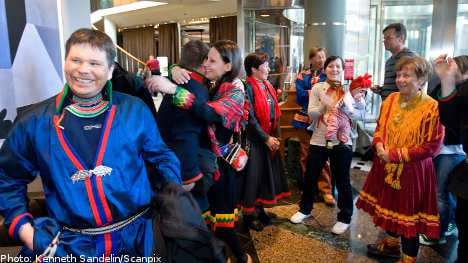The relief was tangible among the Sami who had gathered in Umeå to receive the verdict.
“Finally it is over. We have had 14 years of uncertainty, so this is something we have been waiting for. Finally life can go back to normal routines,” said Oleg Omma, the chair of Umbyn Sami village (Upmeje tjeälddie).
The Supreme Court upheld a Court of Appeal for Upper Norrland ruling from September 2007, which said that the Sami had proven that their ancestors had grazed reindeer on the land in the Nordmaling area “since time immemorial”.
“For us this ruling is absolutely crucial. But primarily I see this as incredibly important for all the children and young people in Sápmi who are considering reindeer herding,” Omma said, referring to the cultural region traditionally inhabited by the Sami people.
“This will ease concerns in all of Sápmi, for all of us who work with reindeer. It is a ruling for all reindeer herders,” he added.
The case had been brought back in 1998, when over a hundred forest owners in the Nordmaling area clubbed together to try to force the Sami to stop using their land for winter grazing of reindeer.
The Sami villages (Siida) of Ran, Umbyn and Vapsten had no right to use the land, the landowners argued, claiming that the forests had not been used for grazing long enough for the Sami to have established the right to use them.
The Supreme Court however found in their favour, ordering the property owners to pay the legal costs incurred by the Sami villages, running to a total of 3.75 million kronor ($617,000).
Michael Hägglund, who owns forests in Sunnanå, Nordmaling, and is one of the landowners who have now lost the protracted dispute, explained that the court’s ruling was expected.
“The courts have not dared to take a position in any other way because of the EU and because the Sami are a minority people. The authorities should in fact have sorted this out earlier, before the problem emerged,” he said.
The Supreme Court decided to try the case as customary law had not previously been considered. The court’s ruling thus sets legal precedent, meaning that lower courts have to follow to the decision.
“Now we have written a piece of history for the Sami. And finally, it is in a positive direction,” said Camilla Wikland, who represented the Sami in the case.



 Please whitelist us to continue reading.
Please whitelist us to continue reading.
Member comments